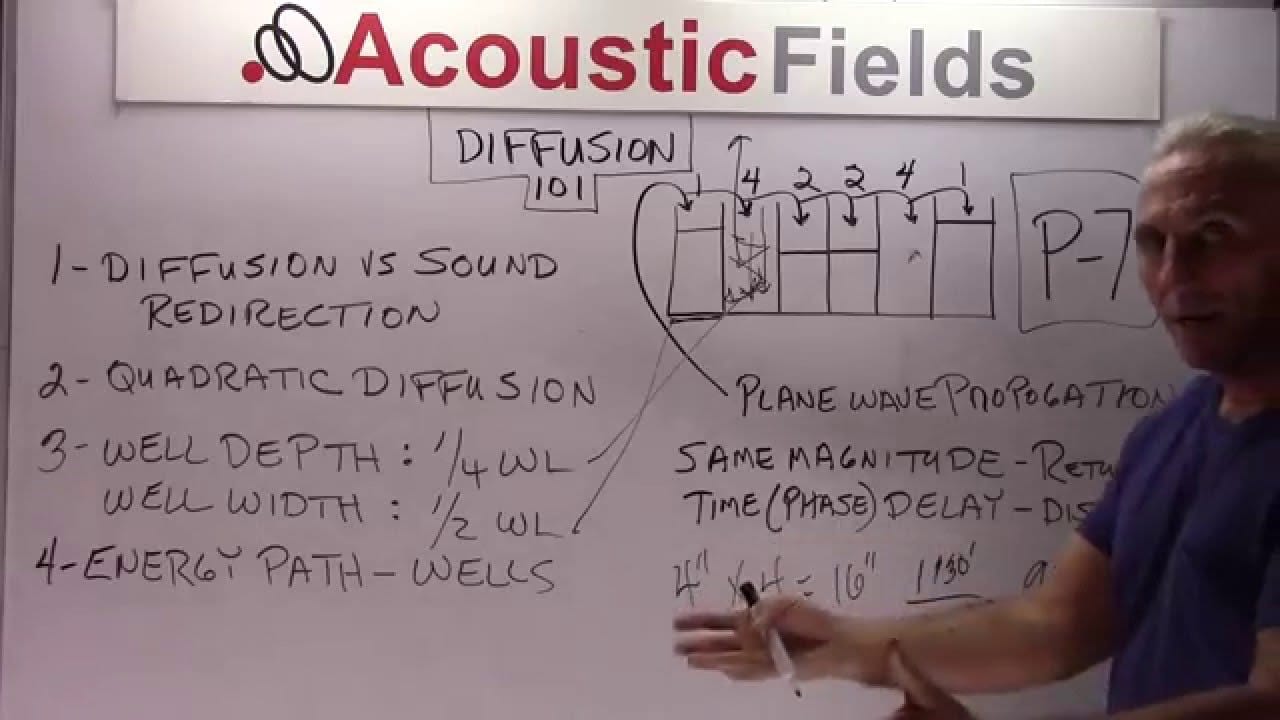Today we’re going to talk about diffusion.
I’m going to do a two or three parts series on diffusion because there seems to be a lot of misunderstanding out there. So we are going to talk about quadratic diffusion in particular and walk you through some of the basics.
The first thing we have to distinguish is between actual diffusion and sound redirection. There are a lot of products in the marketplace that call themselves diffusers, but diffusers must satisfy six real stringent conditions within your room, and we will get into those in the next video. But for purposes of this video we are going to talk about quadratic diffusion, because this is the true diffusion, it actually satisfies all six of those criteria. So we really need to be careful out there, some acoustic product manufacturers have foam, and they call it a foam diffuser. Let’s walk through some of the basics and you can see why I find some of that amusing. The bottom line here is, quadratic diffusion is really the only true diffuser.
What is it? We’ve all seen it, it’s a series of wells or troughs, with real thin dividers between each well or trough, that’s what the spaces between each divider are called. The thinner the divider the better. For practical purposes, they should be about an eighth inch thick, or an eighth inch wide on a divider. But it’s difficult to find small wood of that size, so a quarter inch is what we use on our projects and what seems to work really well and stays true. Quadratic diffusion, each well depth is calculated at one quarter wavelength for the depth. Each well width is calculated in one half wavelength, so you have a little bit of flexibility in width and obviously in depth. This is based on prime number 7, all diffusors are based on some prime.
This particular series is developed by a modular formula where you plug in a constant factor, subtract it and then take the residue from that equation. That’s where they got their name, „residue diffusers“, it’s based on the calculation of the series of wells or troughs within it. This one is based on prime number 7, so we have a 1-4-2-2-4-1. What does all that mean? We can do a little calculating. We can know that this is based on one quarter wavelength to depth, so if it’s four inches then we know times 4, is going to give us 16 inches – about a foot and a quarter. We take the speed of the sound 1130, we divide it by 1.25’’, because they are both in feet, you’re going to get about 900. So this 4 inch depth represents about 900 cycles.
The sounds enters this, bumps in around this little well or trough, and re-exits out the front. Now it returns in the same magnitude, the same strength, so that’s good. We do have a little phase delay here because we have wells that have different depths. So the energy has to travel to different distances. So when it comes out, that’s the reason for the distance. From a particular prime number sequence sitting far enough away so that we can realize the full wave form of finding itself and expanding itself and living the proper dimensions. There’s distances from diffusers that we have to sit. In summary it’s a series of wells or troughs. It’s a true diffuser and we have to distinguish between redirection and actual diffusion. And then we have quadratic diffusion which is the true diffuser with the wells based on half and quarter wavelength.
—
This is an unedited transcript from our video series from Acoustic Fields. There will be some errors in grammar and sentence structure that occur during this translation process.
For complete understanding and comprehension, please vie07w the video which is included in this text. For any additional information regarding this topic or others relating to room acoustics, please contact us directly at:
P: 520 – 392 – 9486







